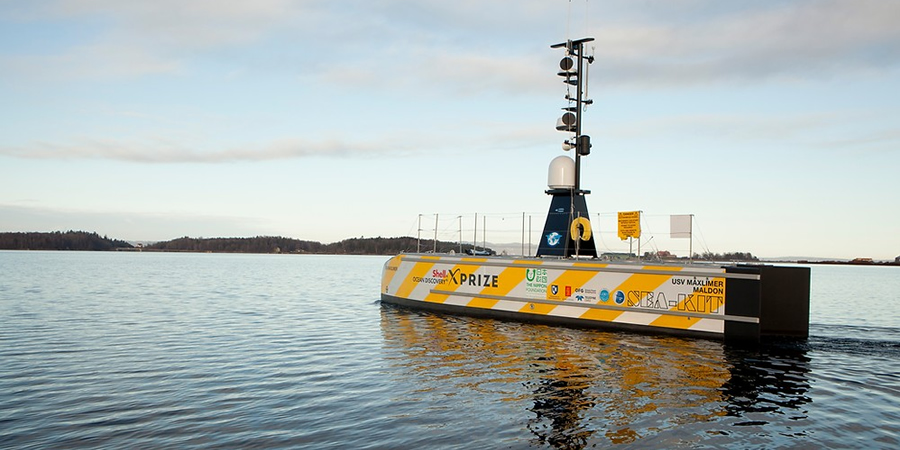There has been a lot of discussion about drones in the sky, but what about on the sea? Drone ships, more commonly known as unmanned surface vessels (USV), are increasingly impacting the future of the maritime industry.
When it comes to industries undergoing digital transformation, the maritime industry may not be the first that springs to mind. However, one of the major advancements includes the accelerated design and manufacturing of USVs that can undertake tasks from the ocean’s surface while being controlled onshore. USVs are starting to replace some technologies used across the marine sectors but, even more excitingly, they are creating possibilities for completely new ways of working based on automated technology.
Drones can safely go where humans can’t. Improving safety, reducing costs, speeding up processes and making access challenges a breeze, are just a handful of the benefits of using drones in the maritime industry. According to a study by Allianz, between 75% and 96% of maritime accidents are caused by human error. If autonomous and semi-autonomous systems can help reduce the reliance on humans that can make mistakes due to fatigue or bad judgment, autonomous ships could eventually make our oceans safer.
A reduction or elimination of crew reduces the personnel and auxiliary costs (such as salaries, onboard provisions and insurance) on a voyage. According to CB Insights research, crew-related expenses account for 30% of the budget. There are also efficiencies realized in ship design and use of fuel. One study projected savings of more than $7 million over 25 years per autonomous vessel from fuel savings and crew supplies and salaries.
British-based Sea-Kit International deployed its 12-metre USV Maxlimer for 22 days in the Atlantic Ocean in July and August, mapping 1,000 square kilometres of the seabed. The Maxlimer proved its worth on the surveying mission, with all of its movements controlled remotely, using satellite technology, from Sea-Kit's headquarters in Tollesbury on the east coast of England.
USVs can use a fraction of the fuel of some crewed vessels because there is no need for a bulky crew accommodation structure onboard. "We were burning about 100 litres or under 100 litres of fuel a day," said Neil Tinmouth, Sea-Kit's chief operating officer. "That's compared to a normal survey vessel that can burn up to 10 metres cubed of fuel in a given day. So there, you're looking at one per cent of the fuel consumption."
Norwegian shipbuilder Vard Holdings said it would produce the fully-autonomous and fully-electric container ship, the Yara Birkeland. The ship will be built for Norwegian chemical company Yara, and will be designed as a zero-emissions vessel. It is expected to be completed in 2020. As shipping vessels account for 3% of global carbon-dioxide emissions, the adoption of zero-emission ships could notably reduce pollution around the world.
Everyone in the maritime industry will significantly benefit from the uptake of remote technology. These changes will help to bring about faster, more efficient and safer marine operations, functioning on a significantly more sustainable scale, and also accelerate the maritime industry’s important digital transformation.










